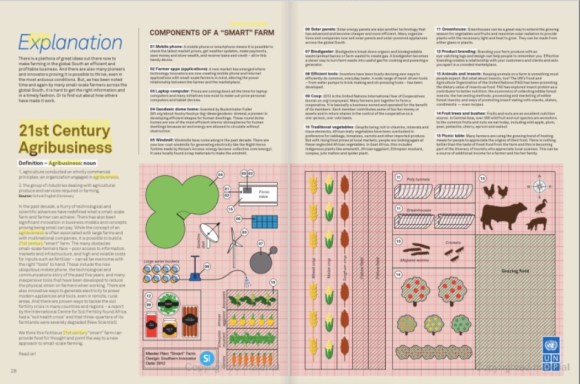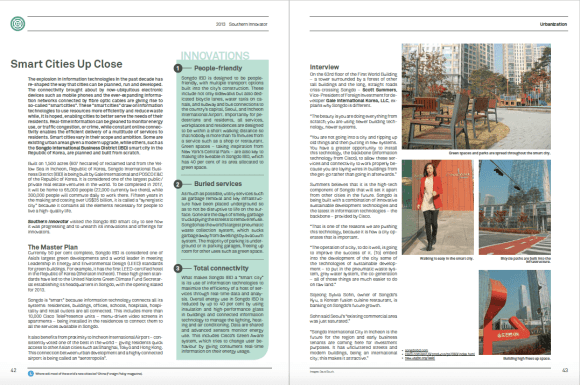By David South, Development Challenges, South-South Solutions

Overuse of pesticides is now acknowledged as one of the gravest mistakes of the Green Revolution, launched in the 1970s to dramatically increase food production in the developing world. Pesticides have polluted the environment, poisoned fertile soil, contaminated ground water and damaged human health.
According to Tata Energy Research, 57 per cent of India’s land is degraded. But the country, it is estimated, will need more than 45 million tons of grains to meet the country’s basic food requirements by 2030. There is little arable land left to cultivate, so it is crucial to develop plants that are more resistant to pests and other diseases.
Two innovations developed at Patnagar University in Patnagar, India – the home of the first Green Revolution back in the 1970s – are now set to spark a second Green Revolution, eschewing harmful chemicals and instead turning to nature to help.
Drawing on the field of below-ground biodiversity (the study of all the nutrients and life forms in soil), scientists at the university are harnessing the elements within the soil, rather than placing chemicals on the soil.
Naturally occurring bacteria microbes have been isolated in the soil. It has been found that they are effective killers of pathogenic fungi diseases that affect plants. They do this by coiling around the fungi and destroying the cell walls of the pathogen. These naturally occurring bacteria effectively disinfect the soil of diseases, allowing the plant to flourish without the use of chemicals.
Patnagar University has patented this technique and sells the bacteria suspended in 200 gram packets of talcum powder to farmers. These so-called bioinoculants can be sown with the seeds or put in manure that is being spread as fertilizer.
Another natural innovation in this second Green Revolution uses common earthworms to tackle animal manure. There are about 1.3 billion cattle in the world, a billon sheep, a billion pigs, 800 million goats and 17 billion chickens (Food and Agriculture Organization of the United Nations [FAO]). This huge mass of animals produces vast quantities of manure – an estimated 3 billion tons.
In 2006, an FAO report called animal manure “one of the top two of three most significant contributors to the most serious environmental problems at every scale.” Too much of it, and groundwater is contaminated and wetlands destroyed.
India produces millions of tons of livestock manure. Dr. R.J. Sharma, dean of veterinary and animal sciences at the Patnagar university, has found a handy way to rid farms of manure and produce highly useful fertiliser (and extra income!) for agriculture by using epigeic earthworms, or vermicomposting.
Dr Sharma explains that his herd of 750 cows and buffalo on his dairy farm were becoming a big problem: “Previously we had a problem disposing this excreta, and we are dumping freshly in the fields and that fresh dung takes a lot of time to decompose and a lot of problems with insects and foul smelling,” he told the BBC.
The worms degrade the manure while increasing the manure’s fertiliser qualities, creating more nitrogen and phosphorus: two essential ingredients necessary for growing crops. They were found to be excellent in breaking down manure from cows, horses, sheep and goats.
And Sharma discovered an added benefit to getting rid of this foul-smelling manure: he can make 30,000 rupees a day selling the fertilizer, while he is only making 20,000 rupees a day from selling his milk. And it only takes the earthworms between 40 and 50 days to turn this manure to money.
Published: January 2008
Resources
- Digital soil maps: The Food and Agriculture Organization has a CD-ROM soil map available here, and the GlobalSoilMap initiative is building a real-time soil map here.



Development Challenges, South-South Solutions was launched as an e-newsletter in 2006 by UNDP’s South-South Cooperation Unit (now the United Nations Office for South-South Cooperation) based in New York, USA. It led on profiling the rise of the global South as an economic powerhouse and was one of the first regular publications to champion the global South’s innovators, entrepreneurs, and pioneers. It tracked the key trends that are now so profoundly reshaping how development is seen and done. This includes the rapid take-up of mobile phones and information technology in the global South (as profiled in the first issue of magazine Southern Innovator), the move to becoming a majority urban world, a growing global innovator culture, and the plethora of solutions being developed in the global South to tackle its problems and improve living conditions and boost human development. The success of the e-newsletter led to the launch of the magazine Southern Innovator.




This work is licensed under a
Creative Commons Attribution-Noncommercial-No Derivative Works 3.0 License.
ORCID iD: https://orcid.org/0000-0001-5311-1052.
© David South Consulting 2023












You must be logged in to post a comment.